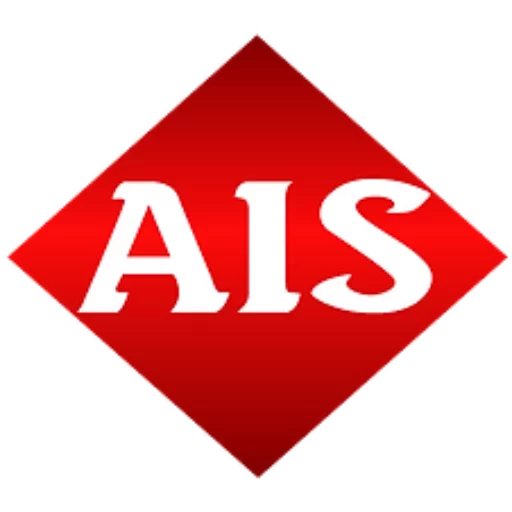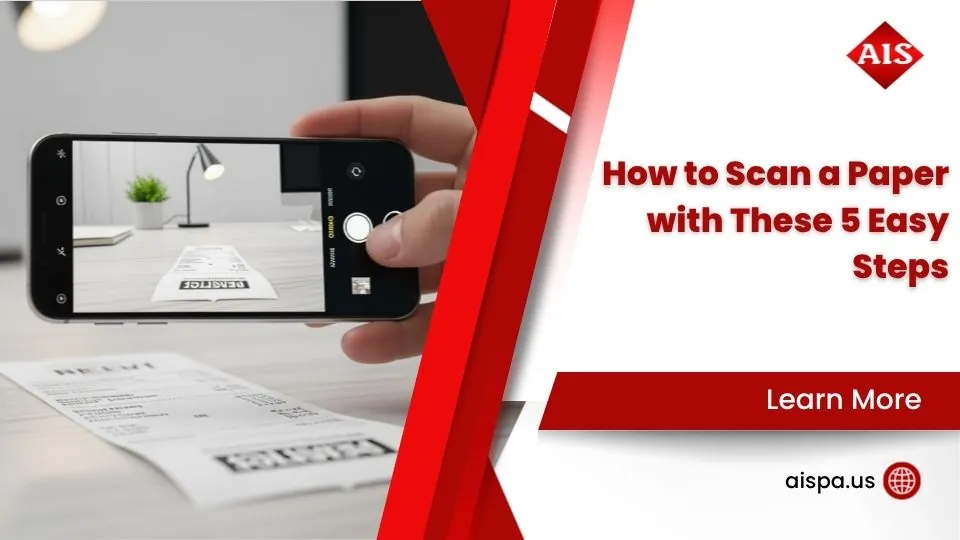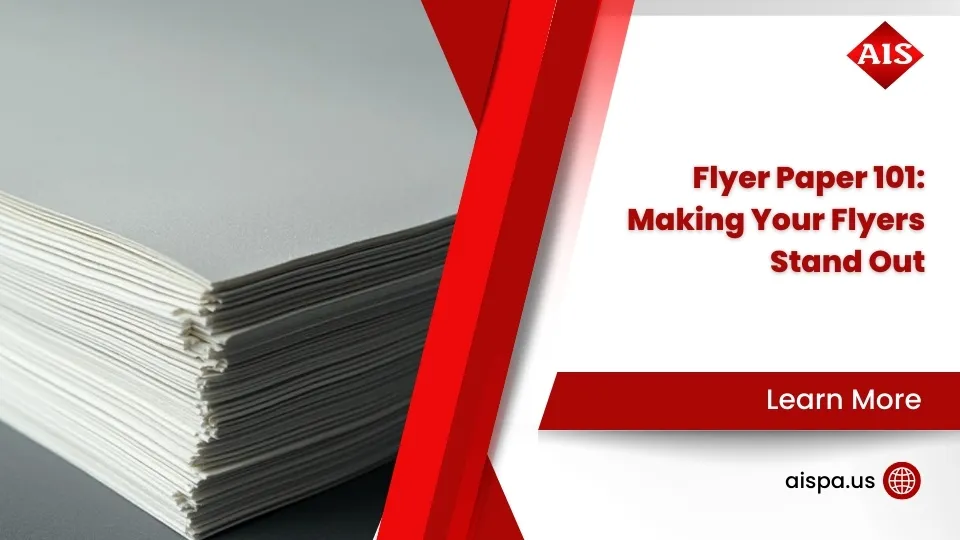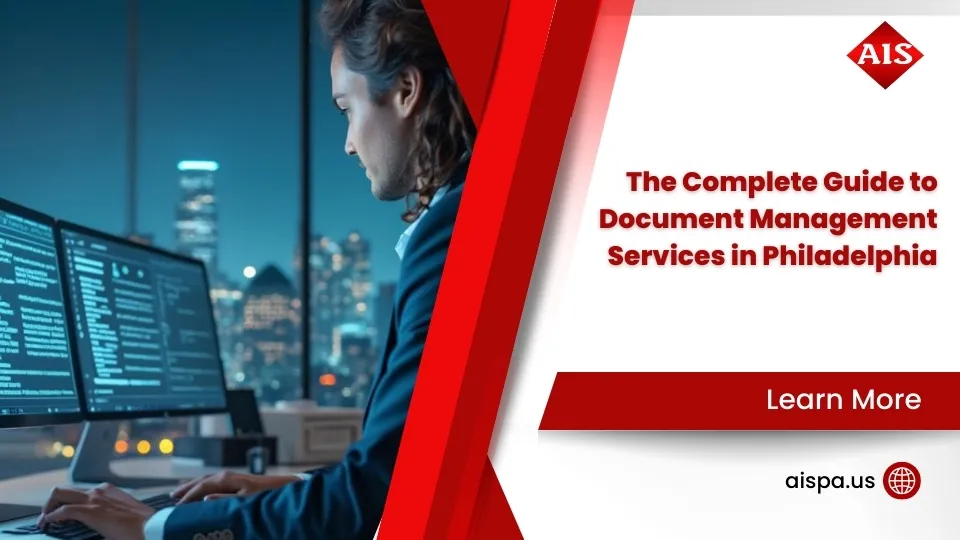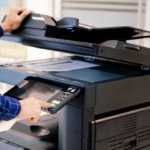From Paper to Professional: Choosing the Right Letterhead Paper
Looking for the perfect letterhead printing paper types for your business? Here’s a handy overview of your main options:
| Paper Type | Weight Range | Best For | Key Features |
|---|---|---|---|
| Bond | 24-32 lb (90-120 gsm) | Standard business use | Durable, smooth, often watermarked |
| Cotton | 24-32 lb (90-120 gsm) | Premium correspondence | Luxurious feel, 25-100% cotton content |
| Linen | 24-32 lb (90-120 gsm) | Professional services | Textured surface with woven pattern |
| Recycled | 24-32 lb (90-120 gsm) | Eco-conscious brands | 30-100% post-consumer content |
| Uncoated | 24-70 lb (90-180 gsm) | Everyday letterhead | Excellent writeability, natural feel |
Stack of crisp, professional letterhead you received from your lawyer or financial advisor? The way it felt in your hands instantly communicated quality and attention to detail. That’s the power of selecting the right paper for your business communications.
Letterhead printing paper types might seem like a small detail, but they form the foundation of your company’s printed identity. Even as we accept digital communication, a well-crafted letterhead on quality paper creates an immediate impression that speaks volumes about your brand.
The paper you select does double duty – it affects both the visual impact of your communications and the tactile experience when someone holds your letterhead. Plus, choosing the right paper ensures compatibility with your office printers, preventing those frustrating paper jams during important print runs.
“The letterhead is essential for any business, used for everything from official correspondence to internal memos and marketing materials,” industry experts point out. The right paper stock lifts your brand, while a poor choice might subtly undermine your professional message.
Most businesses find their sweet spot with uncoated paper between 24 lb (90 gsm) and 70 lb (105 gsm), with 24 lb being the gold standard for premium business correspondence. This weight range hits that perfect balance – substantial enough to feel important in hand, yet compatible with standard office printers.
When making your selection, consider three key factors: the impression you want to create, your printer compatibility, and your budget reality. Premium options like cotton-content papers convey luxury and permanence but come with a higher price tag. Standard bond papers offer reliability and value for everyday business use without breaking the bank.
Why Letterhead Paper Matters for Brand Image
When emails and texts dominate, the physical letterhead has become a powerful statement. When your client opens an envelope and feels that crisp, substantial paper between their fingers, something special happens – your brand makes a lasting impression before they’ve read a single word.
“Developing a distinctive brand is a crucial part of growing any business, and your letterhead is an important part of that,” as print industry veterans often remind us. Your letterhead creates a tangible connection that digital just can’t replicate.
Think about how your paper choice shapes perception. Credibility is instantly established when correspondence arrives on premium stock – it signals you’re an established professional who values quality. That first impression happens in seconds as recipients register the weight and texture in their hands. The durability of better papers demonstrates that your message is meant to last, not to be quickly discarded.
Consistency across all your printed materials reinforces your brand identity with every interaction. Perhaps most overlooked is the power of hand-feel – that physical sensation when someone holds your letterhead creates a memorable impression that digital communication simply cannot match.
Color psychology plays a subtle but important role too. Bright white papers convey modernity and precision, perfect for tech companies and contemporary brands. Cream or ivory tones suggest tradition and stability, often favored by legal firms and financial institutions. These subtle distinctions can powerfully align with your overall brand positioning.
Here at Associated Imaging Solutions, we’ve observed throughout Philadelphia and Pennsylvania that businesses investing in quality letterhead printing paper types are consistently perceived as more established and detail-oriented. This perception isn’t just about looking good – it affects how seriously recipients engage with your message.
The right paper doesn’t just carry your words; it carries your reputation. In a digital age, the deliberate choice to communicate through premium physical materials speaks volumes about your attention to detail and commitment to excellence.
For more insights on selecting the right paper for various needs, our guide on Copy Paper vs Printer Paper provides helpful context for understanding paper selection beyond just letterhead applications.
The Essential Letterhead Printing Paper Types
Choosing the right letterhead printing paper types feels a bit like selecting the perfect handshake for your business – too limp and you’ll make a weak impression, too stiff and you might come across as trying too hard. Let me walk you through the main options to help you find that perfect balance.

Bond Paper – Classic Standard
Bond paper is the reliable friend of business letterhead – always dependable and never lets you down. It got its name from being used to print government bonds (a fun bit of paper trivia for your next office gathering!).
Bond paper delivers a professional feel without breaking the bank. Typically weighing in at 20-24 lb (75-90 gsm), it resists yellowing over time and plays nicely with both laser and inkjet printers. The smooth, uniform surface ensures your text looks crisp and professional.
Many of our Philadelphia clients opt for the 24 lb (90 gsm) weight as it hits that sweet spot between substantial feel and everyday usability. Some premium versions include watermarks – those subtle designs visible when held to light – adding a touch of sophistication and authenticity to your communications.
Cotton Paper – Premium Feel
When you want your letterhead to whisper “luxury” as it’s pulled from the envelope, cotton-content paper is your go-to choice.
Cotton paper has a naturally soft yet substantial feel that’s immediately recognizable. Available in ranges from 25% to 100% cotton fiber, even the lower cotton content options provide a noticeable upgrade in quality. The 25% cotton content strikes a nice balance between luxury and cost-effectiveness for most businesses.
I’ve noticed law firms and financial institutions across Pennsylvania particularly love cotton paper because it subtly communicates stability and attention to detail. It also has superior longevity – your communications might just end up as family heirlooms! Well, perhaps that’s stretching it, but they certainly won’t yellow or deteriorate as quickly as standard papers.
Linen & Textured Papers – Tactile Appeal
Textured papers add a delightful sensory dimension to your correspondence. When someone runs their fingers across a linen-textured letterhead, they’re engaging with your brand in a way that digital communication simply can’t match.
Linen paper, with its subtle crosshatch pattern reminiscent of woven fabric, remains the most popular textured option. But don’t overlook other interesting textures like felt (with its soft, random fiber patterns), eggshell (featuring a gently pebbled surface), or laid (containing visible parallel lines from traditional papermaking).
These textured options create a memorable impression that lingers long after the content has been read. We’ve helped many professional service firms in Philadelphia select textured papers that perfectly complement their brand personality – traditional firms often gravitate toward laid finishes, while more contemporary businesses might prefer the subtle elegance of eggshell.
Recycled & Eco-Friendly Sheets – Sustainability Focus
Going green doesn’t mean sacrificing quality. Modern recycled papers have come a long way from the speckled, grayish sheets of yesteryear.
Today’s eco-friendly options include papers with 50% to 100% recycled content, with varying amounts of post-consumer waste (paper that’s already been used and recycled). Look for FSC certification to ensure your paper comes from responsibly managed forests that provide environmental, social, and economic benefits.
Many of our environmentally conscious clients appreciate how these sustainable choices allow them to literally put their values on paper. Using recycled letterhead subtly communicates your company’s commitment to sustainability with every piece of correspondence you send.
Coated vs Uncoated – Writeability vs Vibrance
The coating decision significantly impacts both how your letterhead looks and how it functions in daily use.
Uncoated paper remains the standard for letterhead because it’s practical – you can easily write on it with pen or pencil (try that on glossy paper and watch the ink smear!). It works beautifully with both laser and inkjet printers and has a natural, tactile feel that most people associate with professional correspondence. The slight absorption of ink gives text a warm, slightly softer appearance.
Coated paper (available in gloss, satin, or matte finishes) trades that writeability for visual impact. Colors appear more vibrant, and images look sharper because the ink sits on top of the coating rather than being absorbed. While this can create stunning visual effects, the practical limitations for everyday business use make coated stocks less common for standard letterhead.
For more insights on various paper types beyond letterhead, our guide on Types of Paper for Printing offers a comprehensive overview.
How letterhead printing paper types and weights correlate
Understanding paper weight can feel like learning a new language, but it’s actually quite straightforward once you grasp the basics.
Paper weight is measured in two ways: GSM (grams per square meter) globally, and pounds (lb) in the U.S. system. The pound measurement can be confusing because it refers to the weight of 500 sheets of the basic size of that paper type before it’s cut to the final size.
The weight of your letterhead printing paper types directly influences perception:
Light bond paper (20 lb/75 gsm) feels similar to everyday copy paper – functional but not particularly impressive. Standard letterhead (24 lb/90 gsm) provides that professional feel that most businesses prefer. Premium letterhead (28-32 lb/105-120 gsm) offers substantial heft and durability that recipients immediately notice. Presentation-grade (70 lb/180 gsm) approaches card stock in thickness and makes a bold statement.
The difference between a 20 lb sheet and a 28 lb sheet is immediately apparent when handled – even before reading a single word, your recipient is forming impressions about your business based on this tactile experience.
Matching letterhead printing paper types with printer technology
Even the most beautiful paper is useless if it constantly jams your printer or produces poor-quality results. That’s why matching your paper to your printing equipment is crucial.
Laser printers work best with heat-resistant, uncoated papers in the 20-28 lb (75-105 gsm) range. Very smooth papers can sometimes cause feeding issues due to static electricity – a common frustration in dry office environments, especially during winter months.
Inkjet printers prefer papers with higher absorption rates. Special inkjet-coated papers can improve color vibrancy, though these are less common for letterhead applications. Most inkjet printers can handle weights up to 32 lb (120 gsm) without difficulty, though highly textured papers may cause uneven ink distribution.
At Associated Imaging Solutions, we’ve helped countless businesses across Philadelphia select the perfect paper for their specific equipment. Our experience with diverse printing technologies allows us to recommend paper stocks that will work seamlessly with your existing printers, saving you from the frustration of paper jams and poor print quality.
Your letterhead paper should support your message without overwhelming it – like a perfect backing singer who improves the lead vocalist without stealing the spotlight.
Choosing the Right Weight, Color & Brightness
Finding that perfect balance of weight, color, and brightness for your letterhead isn’t just about aesthetics—it’s about making a statement before anyone reads a single word of your message.
Paper Weight
Most professional letterheads shine in the 100-160 gsm (24-40 lb) range, striking that sweet spot between substantial feel and practical usability.
When you hold a 24 lb (100 gsm) sheet, you’ll immediately notice it feels more substantial than everyday copy paper. Step up to 28-32 lb (105-120 gsm), and you’re entering premium territory—paper with presence that says “this matters” before the recipient even begins reading. Go beyond 40 lb (160 gsm), and you’re approaching card stock territory, which might look impressive but could wrestle with your office printer.
“For most businesses, a letterhead paper weight between 120gsm and 160gsm is ideal for a professional look and feel,” our print specialists often advise clients across Philadelphia. This range delivers that quality perception without causing printer headaches.
Paper Color
While brilliant white dominates the letterhead world, subtle color variations can speak volumes about your brand personality:
Bright white creates that modern, clean canvas where colors pop and text stands crisp against the background. Natural white offers a slightly warmer tone that’s easier on the eyes during extended reading. Ivory or cream tones convey tradition and sophistication—perfect for law firms, financial advisors, or heritage brands. Light colored papers can incorporate subtle brand elements, though they require careful consideration for text readability.
We’ve found that most of our Pennsylvania clients prefer to “choose white or cream paper for readability and apply brand colors in logo and contact areas,” as this ensures content remains highly readable while still showcasing brand identity.
Brightness
Paper brightness isn’t just about being white—it’s measured scientifically on a scale from 0-100, with higher numbers reflecting more light:
Papers rating 96-100 brightness deliver that ultra-white, high-contrast look that makes colors leap off the page. The 92-95 range offers professional brightness without excessive glare, while 88-91 provides a slightly softer appearance that reduces eye strain during longer reading sessions.
For letterhead containing substantial text, we typically recommend a brightness in the 90-94 range for the best balance between visual impact and reading comfort.
Here’s how common weights translate to real-world perception:
| Weight (lb/gsm) | Feel | Printer Compatibility | Perceived Quality | Best For |
|---|---|---|---|---|
| 20 lb (75 gsm) | Light | Excellent | Basic | Internal memos |
| 24 lb (90 gsm) | Medium | Very good | Professional | Standard business correspondence |
| 28 lb (105 gsm) | Substantial | Good | Premium | Client proposals |
| 32 lb (120 gsm) | Heavy | Fair | Luxury | Executive communications |
| 70 lb (180 gsm) | Very heavy | Limited | Ultra-premium | Formal invitations |
“Letterhead paper is typically uncoated and at least 100gsm, compared to regular copier paper which is usually 80gsm,” our paper experts explain to clients. This difference isn’t subtle—it’s immediately noticeable when someone receives your correspondence.
The letterhead printing paper types you select create an immediate tactile impression that either reinforces or undermines your brand positioning. At Associated Imaging Solutions, we help businesses match their paper choices to both their brand identity and their printer capabilities.
For more comprehensive guidance on selecting the right paper for various printing needs, our guide on Choose Right Printer Paper Types offers deeper insights custom to your specific requirements.
Specialty Finishes & Sustainable Options
Let’s lift your letterhead game! While choosing the right paper type forms your foundation, specialty finishes can transform your business communications from merely professional to truly memorable. And if environmental responsibility matters to your brand (as it does to many of our Philadelphia clients), you’ll be pleased to know you don’t have to sacrifice quality for sustainability.

Specialty Finishes
Foil Stamping brings a touch of brilliance to your letterhead that simply can’t be ignored. Imagine your company logo gleaming in gold, silver, or copper metallic finish – it creates an immediate impression of premium quality. I’ve seen clients’ faces light up when they first hold their foil-stamped letterhead!
“For foil-blocked or embossed finishes, a minimum paper weight of 160gsm is recommended to ensure a high-end feel,” as our printing partners often remind us. This heavier paper provides the necessary structure to prevent warping during the heat application process.
Embossing and Debossing add a tactile dimension that digital simply can’t replicate. When someone runs their fingers over your raised logo (embossing) or recessed design (debossing), they’re engaging with your brand in a physical way that creates lasting impressions. These techniques work beautifully without ink or foil in what we call “blind embossing” – a subtle yet sophisticated approach that high-end law firms and financial institutions often prefer.
Watermarks offer a delightful surprise element to your communications. As one client told me, “I love when someone holds up my letterhead and suddenly notices our logo appearing in the light.” Traditional watermarks have long been symbols of authenticity and security, with premium papers like Royal Executive Bond featuring watermarks that can be verified by holding the paper to light.
Die-Cutting and Perforation let you break free from the standard rectangle. Whether it’s rounded corners, a unique edge pattern, or functional tear-off sections for response cards, these techniques make your letterhead instantly recognizable. One of our non-profit clients uses a subtle leaf-shaped die-cut on their corner that perfectly reinforces their environmental mission.
Sustainable Paper Options
You don’t have to choose between looking good and doing good. Modern eco-friendly papers perform beautifully while helping you meet sustainability goals.
FSC-Certified Papers come from responsibly managed forests that protect biodiversity and indigenous peoples’ rights. The Forest Stewardship Council certification is the gold standard in sustainable paper sourcing, and these papers are available in virtually every weight and finish you might need for professional letterhead. When you choose FSC-certified stock, you’re supporting global forest conservation efforts with every letter you send.
Recycled Content papers have come a long way! The slightly grayish, speckled recycled papers of the past have been replaced with bright, smooth options that perform just as well as virgin fiber papers. Available with 30%, 50%, or even 100% post-consumer waste content, these papers reduce landfill usage while maintaining professional appearance. Many of our Philadelphia business clients appreciate being able to note their recycled content percentage right on their letterhead as part of their sustainability messaging.
Carbon-Neutral Papers address the emissions impact of paper production. These papers come from mills that use renewable energy and purchase carbon offsets to neutralize their environmental footprint. For businesses with carbon reduction goals, these papers offer a simple way to align your everyday communications with your environmental values.

“Recycled paper options for letterhead are available in both 50% and 100% recycled content, supporting sustainability initiatives,” according to recent industry data. What’s particularly exciting is that these papers now perform exceptionally well in both inkjet and laser printers, making them practical choices for everyday business use.
Here at Associated Imaging Solutions, we’ve helped countless businesses across Philadelphia find the perfect balance between impressive letterhead finishes and environmental responsibility. We understand that your paper choices reflect your brand values, and we’re happy to recommend specific letterhead printing paper types that will work flawlessly with your existing printers while meeting your sustainability goals.
Want to explore more about balancing quality and environmental responsibility in your paper choices? Check out our comprehensive guide on Best Printer Paper for Quality and Sustainability.
Common Mistakes & Best Practices
Let’s face it – we’ve all made paper selection mistakes that led to printer jams, smudged ink, or letterhead that just doesn’t quite match our vision. At Associated Imaging Solutions, we’ve seen it all across Philadelphia businesses, and we’re here to help you avoid these common pitfalls when working with letterhead printing paper types.
Common Mistakes to Avoid
That beautiful, ultra-heavy paper stock might look amazing in the catalog, but if it won’t feed through your office printer, it won’t do you much good! One of the most frequent mistakes we see is mismatching paper weight with printer capabilities. Those fancy 32 lb+ papers often cause jams in standard office printers that simply weren’t designed to handle them.
Similarly, many businesses fall into the trap of choosing coated paper for everyday letterhead without realizing the practical implications. While glossy paper makes your colors pop beautifully, just try writing a quick note on it with a ball-point pen – that ink will smear faster than ice cream on a Philadelphia sidewalk in August! Save those coated stocks for your marketing materials instead.
Another common issue we encounter is over-saturating paper with ink. That full-bleed background in your company color might look striking in theory, but in practice, it can lead to smudging, extended drying times, and even printer damage. Keep your designs relatively light, especially in areas where people might need to write.
Many people don’t realize that paper has a grain direction (similar to wood), and ignoring paper grain direction can cause unexpected problems. For best results with letterhead, the grain should run parallel to the short edge, which improves folding quality and printer feeding.
We’ve also seen countless businesses struggle with selecting incompatible paper for their printer type. Inkjet and laser printers interact with paper very differently – what works beautifully in one can cause disasters in the other. Using inkjet-optimized paper in a laser printer can actually cause coating to melt or peel, while laser paper used with inkjets often results in poor ink absorption and blotchy text.
Color matching across different paper types can be particularly tricky. If you’re expecting exact color matching across different paper types, you might be disappointed. The same logo printed on bright white, natural white, or cream papers will appear noticeably different – something to consider if brand color consistency is crucial to your image.
Perhaps the most costly mistake is skipping sample testing before placing a large order. Nothing’s worse than receiving boxes of expensive letterhead only to find it doesn’t work with your printer or the colors look nothing like you expected. Always request and test samples first!
Finally, don’t overlook proper storage. Storing letterhead improperly – in too-humid conditions, too-dry environments, or direct sunlight – can lead to warped paper or yellowing over time. Keep your letterhead in a cool, dry place in sealed packaging.
Best Practices for Letterhead Paper
When selecting your letterhead printing paper types, always order samples before committing to a large purchase. This small step can save you significant headaches down the road. We’re happy to provide sample sheets of various options so you can compare texture, weight, and print quality before making your final decision.
Be sure to consider your printer specifications from the start. Check your printer manual for recommended paper weights and types – most office printers perform best with papers in the 20-28 lb (75-105 gsm) range. If you’re using a commercial printer for your letterhead, they can advise on compatible options.
It’s smart to match paper to communication purpose within your organization. Consider using heavier, premium papers for important client proposals or executive communications, while standard weights work perfectly for everyday correspondence. This tiered approach balances cost with impression.
For a cohesive brand presence, maintain consistent paper across stationery items. Using the same paper stock for letterhead, second sheets, envelopes, and compliment slips creates a unified impression that subtly reinforces your attention to detail.
If you’re using inkjet printers, take time to test ink drying time on your chosen paper. Some paper stocks take significantly longer for ink to dry, which can lead to smudging in high-speed printing environments – not the professional look you’re aiming for!
For businesses with international correspondence, consider digital alternatives that can be printed locally. This approach avoids international shipping costs and delays while ensuring your brand presentation remains consistent globally.
Finally, always keep design files accessible so you can quickly reprint when supplies run low. Nothing’s worse than running out of letterhead before an important client meeting!
“Balancing form and function—distinctive branding without compromising readability,” is key according to design experts. Your letterhead should make a statement while remaining practical for everyday business use.
For more information on selecting appropriate paper for specific printing needs, visit our guide on Types of Hard Paper for Printing.
Letterhead Sizes, Printer Compatibility & Ordering Tips
Getting the perfect letterhead starts with choosing the right size and ensuring it works with your printing equipment. Let’s walk through what you need to know to make smart choices for your business stationery.

Standard Letterhead Sizes
When it comes to letterhead dimensions, you have several options depending on your location and specific needs.
The US Letter size (8.5″ × 11″) is what most American businesses use, and for good reason—it perfectly matches standard filing systems and envelopes. If you primarily conduct business within the United States, this is your go-to choice.
For businesses with international connections, the A4 size (8.27″ × 11.69″) might be more appropriate. It’s slightly narrower and longer than US Letter and is the standard throughout most of the world outside North America.
Need something more substantial for legal documents? The Legal size (8.5″ × 14″) gives you extra room for contracts and detailed agreements. Many law firms and real estate companies prefer this format.
For presentations or documents that need visual impact, consider Tabloid size (11″ × 17″). It’s exactly double the size of US Letter and makes a statement when you need one.
Some businesses also use Half-Letter size (5.5″ × 8.5″) for internal memos or personal stationery. It’s compact yet professional—perfect for brief communications or note cards.
“Most of our Philadelphia clients stick with US Letter for their letterhead printing paper types,” notes our team at Associated Imaging Solutions. “But we’re seeing more companies request A4 options as they expand globally.”
Bleed and Margin Requirements
Creating professional letterhead requires understanding some basic design principles.
Think of your letterhead as having invisible zones. The bleed area extends 1/8″ beyond where the paper will be cut, ensuring any background colors reach the very edge without white borders. Imagine it as insurance against small cutting variations.
Within the trim line, establish a safety margin of at least 1/8″ to keep important elements from being too close to the edge. Your company logo and essential information should never flirt with the edge of the page.
Most letterheads reserve about 0.5″-1″ at the top for the header elements—typically your logo and company name. Side margins usually run 0.75″-1″ for a clean, professional look that’s easy to read. And don’t forget to leave at least 0.5″ at the bottom for your contact details and other footer information.
“One common mistake we see is designing letterhead without proper margins,” shares our print specialist. “When text runs too close to the edges, it not only looks unprofessional but can actually get cut off by some printers.”
Color Systems for Letterhead Printing
When it comes to color, you have two main options, each with distinct advantages.
CMYK (Cyan, Magenta, Yellow, and Black) is the standard for digital printing. It works by layering these four ink colors to create a full spectrum of shades. This system is perfect if your letterhead includes photographs or gradient effects, and it’s usually more economical for smaller print runs. The trade-off? Colors might not be as precisely matched to your brand standards.
Pantone (or spot colors) uses pre-mixed inks to achieve exact color consistency. If your brand has specific color requirements—like that perfect shade of blue in your logo—Pantone is the way to go. These inks can also include special effects like metallics or fluorescents that CMYK simply can’t reproduce. While more expensive, the precision is worth it for many businesses.
Many of our clients at Associated Imaging Solutions opt for a hybrid approach: using Pantone for their logo and CMYK for any supporting graphics. This gives you the best of both worlds—precise brand colors where it matters most, with the economy of CMYK for everything else.
Printer Compatibility Considerations
Different printers have different personalities when it comes to handling paper. Understanding these quirks can save you a lot of frustration.
Desktop inkjet printers are versatile but particular. They generally work best with papers specifically designed for inkjet printing, which have special coatings to prevent ink from bleeding or spreading. Most inkjets can handle weights up to 32 lb (120 gsm) without complaint, but may need special settings adjusted for heavier stocks. One thing to remember: colors often appear slightly different on paper than on your screen.
Office laser printers generate heat during the printing process, so they need papers that can withstand this without curling or melting. They typically handle up to 28 lb (105 gsm) paper reliably and produce crisp text with consistent color. However, they might struggle with heavily textured papers, which can cause uneven toner application.
Commercial offset presses are the professional heavyweights. They can accommodate virtually any paper type and weight you throw at them and provide the highest quality reproduction. They also allow for special touches like foil stamping, embossing, or die-cutting that office printers simply can’t match. While more expensive for small runs, they become more economical as quantities increase.
“We often help clients test their letterhead printing paper types with their existing office equipment before placing large orders,” explains our technical team. “Nothing’s worse than investing in beautiful letterhead that your printer can’t handle.”
Ordering Tips
When it’s time to place your order, a few strategic decisions can save you money and headaches.
First, consider quantity breaks carefully. Most printers offer significant discounts at certain thresholds—typically 250, 500, 1,000, and 2,500 sheets. Take a moment to estimate your annual usage to find the sweet spot between having enough stock and not storing excess inventory.
Always request paper samples before committing to a large order. This allows you to test different options with your actual office printers and see how they feel in hand. What looks good in theory might not perform well in practice.
Don’t forget to order matching envelopes at the same time. Using the same paper stock for both letterhead and envelopes creates a cohesive, professional impression. Plus, it’s usually more economical to order everything together.
Be specific about packaging requirements. Request your letterhead be shrink-wrapped in smaller bundles (100-250 sheets) to keep unused stock clean and protected from moisture or dust. This is especially important in humid climates like Philadelphia summers.
Finally, maintain digital templates of your letterhead design. These serve as backups for printing small quantities in-house or for creating professional-looking email attachments when physical letterhead isn’t practical.
“The right packaging makes a difference,” our fulfillment team points out. “We’ve seen beautiful letterhead ruined by improper storage. Those small extra steps in packaging protect your investment.”
At Associated Imaging Solutions, we work with businesses throughout Philadelphia and Pennsylvania to select letterhead papers that complement their brand while working seamlessly with their existing equipment. Whether you’re printing on office equipment or using commercial services, we can help ensure professional results every time.
For more comprehensive information about different paper options for various printing needs, check out our guide on Paper Types for Printing.
Frequently Asked Questions about Letterhead Paper
What is the ideal weight for everyday business letterhead?
Finding that “just right” weight for your letterhead can make all the difference in how your business communications are received. For most day-to-day business needs, 24 lb (90 gsm) bond paper hits the sweet spot. It feels noticeably more substantial than regular copy paper but won’t cause headaches with your office printers.
“Letterhead paper should be at least 100gsm, with most businesses using 100–120gsm smooth, matte uncoated paper,” according to industry standards. This recommendation balances professional appearance with practical everyday use.
If you’re looking to make an even stronger impression, consider stepping up to 28 lb (105 gsm) paper. This weight offers additional substance and a more premium feel while still working smoothly with most standard office equipment.
Just be cautious about going too heavy. Papers weighing 32 lb (120 gsm) and above might look fantastic, but they could cause feeding issues in some printers. If you’re eyeing these premium weights, we always recommend testing samples with your specific printer models before placing a large order. Nothing’s more frustrating than investing in beautiful letterhead that your printer refuses to cooperate with!
How do I keep colors accurate across different paper stocks?
Color consistency across different paper types is one of those challenges that even seasoned professionals struggle with. When you switch paper stocks, several factors come into play that affect how your brand colors appear.
First, the underlying paper color makes a huge difference. The same exact ink will look noticeably different when printed on bright white versus cream paper. Think of paper as a filter – its natural tone shows through and mixes with your ink colors.
Paper texture also plays a crucial role in color appearance. On smooth papers, ink tends to sit more on the surface, creating vibrant, true-to-design colors. With textured papers, the ink gets absorbed differently into the peaks and valleys of the surface, potentially altering how colors appear.
Perhaps the biggest difference comes when switching between coated and uncoated papers. Coated stocks typically produce more vibrant, saturated colors that really pop, while uncoated papers absorb more ink and create a softer, more muted appearance.
To maintain the most consistent brand appearance across all your materials:
- Stick with the same paper stock for your entire stationery suite when possible
- Always request a proof when switching to a new paper type
- Consider using Pantone spot colors for critical brand elements like logos
- Work with your designer to adjust artwork to account for different paper characteristics
As one printing professional candidly notes: “We don’t guarantee color matching but will print as close as possible to your submitted color.” This honest disclaimer acknowledges what every printer knows – perfect color matching across different papers is more art than science.
Which letterhead printing paper types work best with laser printers?
Laser printers have become the workhorses of modern offices, but they’re somewhat picky about paper. Since they use heat to fuse toner to the page, the best letterhead printing paper types need to withstand those high temperatures without causing problems.
Standard bond paper in the 20-28 lb (75-105 gsm) range tends to be the most reliable choice for laser printers. These papers offer good heat resistance and minimal curling after passing through the fuser unit. Many businesses find that 24 lb bond paper provides the perfect balance of quality feel and reliable performance.
Papers specifically labeled as “laser-optimized” have been specially treated to handle the heat without releasing moisture that causes wrinkling – definitely worth considering if you print high volumes.
The surface texture matters too. Smooth, uncoated finishes allow for even toner adhesion and produce crisp, sharp text. While some matte-coated papers work well in laser printers, always check the manufacturer specifications before purchasing.
What should you avoid running through your laser printer? Heavily textured papers can cause uneven toner application, resulting in spotty text. Standard glossy stocks not specifically rated for laser printing might melt or peel in the printer. Very light papers tend to wrinkle from the heat, and some specialty papers with heat-sensitive coatings can curl or even discolor.
“Uncoated paper allows recipients to sign or jot notes easily and works better in laser and inkjet printers,” explain paper experts. This versatility makes uncoated papers the safest choice for most business letterhead applications.
Here at Associated Imaging Solutions, we work with businesses throughout Philadelphia to find the perfect letterhead paper that performs flawlessly with their specific printer models. Our hands-on experience with diverse printing technologies ensures you’ll get letterhead that not only looks professional but also prints reliably every time.
Conclusion
Your letterhead speaks volumes before a single word is read. Choosing the right letterhead printing paper types isn’t just about aesthetics—it’s a strategic decision that shapes how clients and partners perceive your business from the moment they touch your correspondence.
Throughout this guide, we’ve explored the rich variety of options available, from workhorse bond papers to luxurious cotton stocks, from textured finishes that delight the fingertips to eco-friendly options that align with your sustainability values. Each choice tells a different story about your brand.
Key Takeaways
The perfect letterhead strikes a delicate balance between impressive presentation and practical functionality. Most professionals gravitate toward 24-28 lb (90-105 gsm) paper because it feels substantial in hand while still playing nicely with standard office printers.
Uncoated papers remain the gold standard for business letterhead, offering that perfect combination of professional appearance and practical usability. You want recipients to be able to jot notes or sign documents without ink smudging or beading up on the surface.
We’ve seen many Philadelphia businesses make the costly mistake of choosing beautiful paper that their printers simply can’t handle. Different printing technologies have specific requirements—inkjet printers need more absorbent stocks, while laser printers demand heat-resistant papers that won’t curl or melt.
Decision Checklist
Before finalizing your letterhead paper choice, take a moment to consider:
Does this paper make the impression you want when someone first touches it? Is it compatible with the printers your team uses daily? Does the weight feel appropriate for your typical correspondence? Will the color and brightness complement your logo and design elements? And perhaps most importantly—does this choice reflect your brand’s positioning in the market?
Finding that sweet spot between quality and budget is crucial. Premium cotton papers make a stunning impression, but if your business sends hundreds of letters weekly, a high-quality bond paper might better balance perception and practicality.
How Associated Imaging Solutions Can Help
Here at Associated Imaging Solutions, we’ve guided countless businesses throughout Philadelphia and Pennsylvania toward letterhead papers that make the right impression while working flawlessly with their existing equipment.
We understand letterhead is just one piece of your document management puzzle. Our team can assess your printer compatibility, procure samples so you can compare options firsthand, source specialty papers for unique needs, and optimize your entire document workflow through our managed print services.
“Your letterhead should complement your message, not compete with it,” as our print specialists often remind clients. The paper you choose should improve your communication while functioning seamlessly within your office systems.
With every letter you send, you’re creating a tactile connection to your brand. The right paper transforms ordinary correspondence into a memorable experience that reinforces your professionalism with each touch.
Ready to lift your business communications with letterhead that perfectly captures your brand’s essence? Explore premium paper options or reach out to our team for personalized recommendations custom to your specific needs, equipment, and budget. We’re just a phone call away, ready to help your business make the perfect impression on paper.
